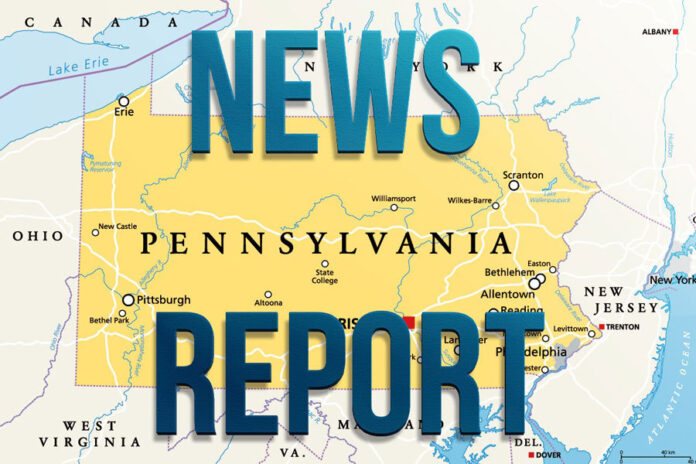Pittsburgh Post-Gazette. November 5, 2023
Editorial: Pa. Human Relations Commission should remove bias in favor of NDAs
The sexual harassment scandal roiling the administration of Gov. Josh Shapiro has highlighted the increasingly controversial use of non-disclosure agreements in sexual misconduct settlements. While it is difficult, of not impossible, to say whether an NDA is unjust in any particular case, given the power imbalance between accusers and institutions — especially governments — they should be used sparingly, at most.
While 17 states have restricted NDAs in sexual misconduct settlements, it is not necessary for Pennsylvania to enact legislation to make a small change in favor of transparency and victims’ rights: The Pennsylvania Human Relations Commission (PHRC) should amend its default settlement form to exclude, rather than include, non-disparagement and confidentiality clauses.
A troubling case
In March, a female employee in Mr. Shapiro’s Office of Legislative Affairs alleged the office’s head, long-time Shapiro aide and ally Mike Vereb, committed sexual harassment and retaliation. The accusations only came to light in September, when Mr. Vereb was allowed to resign as media caught wind of the story.
Earlier that month, the accuser had agreed to a $295,000 settlement that included a mutual non-disclosure agreement. The NDA binds both sides from discussing details of the case: The Commonwealth gets the benefit of potentially damaging details remaining secret, while the accuser is said to get the benefit of privacy.
Mr. Shapiro’s handling of the situation has been perplexing, at best. The governor’s office released a statement praising Mr. Vereb upon his dignified departure, and Mr. Shapiro himself has never publicly broken with him.
It’s uncertain when Mr. Shapiro first became aware of the allegations against one of his top advisers. We do know that the complaint was escalated to the PHRC in June. If the office’s protocols were followed, the governor would have been notified of the complaints by mid-July at the latest. Yet two more months passed, with Mr. Vereb continuing his public duties, until his September resignation.
The settlement agreement frees Mr. Shapiro from having to explain this delay.
Opt-out vs. opt-in
A structural problem with NDAs in cases like this is that, in binding both sides equally, it gives the public impression that both sides’ claims are equal, when in reality very few sexual misconduct claims are contrived. While institutions — whether corporate or public — have many means at their disposal to continue to protect themselves, and to subtly press their case, individual accusers do not. In other words, in most cases, the NDA’s mantle of protection is much broader over the institution than the individual.
In negotiations, the individual accuser is also at a disadvantage — unless he or she can afford a team of excellent lawyers — against a behemoth. In that context, the silence ensured by the NDA can be held out as a requirement to receive the justice of a settlement payout.
The Pennsylvania Human Relations Commission offers mediation of employment related disputes in both the public and private sector, and that’s ultimately where the Vereb case ended up. When parties reach a settlement, the PHRC offers a form in which to fill out the details. Curiously, both non-disparagement and non-disclosure agreements are included in the default settlement form. In other words, the accuser must negotiate them out of the agreement, instead of into it.
This places the commission’s thumb on the scales in favor of NDAs, nudging all parties away from transparency. While it is often said that accusers generally desire the protections of an NDA, it’s hard to know when they are presented with them as faits accomplis.
As an independent commission (whose board members are appointed by the governor), the PHRC can change its settlement forms. It should do so: NDAs should never be the default, and should only ever be added on the initiative of the person whose protection is most important — the victim.
___
Pittsburgh Tribune-Review. November 5, 2023
Editorial: Is Shapiro’s voluntary agreement with CNX the right move for gas well safety?
We do not trust foxes to guard henhouses.
That makes sense. Foxes have a vested interest in chicken coops being as unsecured as possible. A few missing birds may occur under the best circumstances, but if the foxes are in charge, who protects the chickens from the guards?
Is Pennsylvania entering into that kind of deal with gas well data?
On Thursday, Gov. Josh Shapiro announced a collaboration with a natural gas producer to collect in-depth information about emissions and water quality and improve transparency on chemicals used in drilling processes.
“Pennsylvanians want us to do everything we can to help keep them and their families safe,” Shapiro said.
The agreement between the state and CNX Resources of Canonsburg is voluntary. The company will report its air quality on a website. It will also report what chemicals it is using in drilling — something many companies have been reluctant to do for years as they consider the blends proprietary.
These are good steps. So is moving the buffers around drilling sites from 500 or 600 feet to 2,500 feet around things like schools and hospitals. It’s also good that CNX president and CEO Nick Deiuliis says he is committed to “radical transparency.” Nice to hear because a lot of Pennsylvanians are concerned about these issues.
But the word voluntary is a two-edged sword. It says that the driller is stepping forward by choice — but leaves open the door to questions about how that participation and transparency is maintained.
CNX has a history with penalties. In 2017, there were fines topping $400,000 for violations in 2015 and 2016. In 2020, there was a $175,000 fine for a 2019 well failure.
It is up to Shapiro to make the arrangement one that keeps security of the proverbial henhouse in the state’s hands. He has the background to understand that. He was attorney general when a grand jury pointed out flaws in Pennsylvania’s regulation of the drilling industry and made recommendations, which remain unimplemented.
The governor said he would increase state regulators’ role through executive direction as legislators have not taken action. Critics were unimpressed with Shapiro’s steps and the involvement of CNX. Not to be outdone, the natural gas industry likewise bristled at the suggestion of additional legal or regulatory demands.
In the end, the move makes the question of safety surrounding Pennsylvanian gas wells a question of what is better — letting the fox guard the henhouse or no guard at all?
___
Uniontown Herald-Standard. November 2, 2023
Editorial: Reconsider automatically closing schools for prank threats
Students, parents and educators know the drill by now.
The emergency text alert of a bomb threat goes out, forcing caregivers to scramble, cutting the school day short and spreading fear among students, parents and educators alike. Multiple schools across Northeast Pennsylvania have been evacuated and/or closed due to threats on five different weekdays since classes resumed in September. On one occasion, those local threats were part of a nationwide scam that targeted 150 U.S. schools.
The incidents interfere with students’ progress, inconvenience parents and sow anxiety across the community. And they put school administrators in the unenviable and difficult position of weighing student safety against maintaining normalcy, knowing that these threats are almost certainly bogus, but also knowing that making the wrong call could lead to tragedy.
The reaction of local educators during this latest rash of threats has not been uniform. The Scranton School District, for example, chose to keep students in school with heightened security when threats led other regional schools to send students home earlier this month.
Perhaps it’s time for other school districts to consider Scranton’s approach.
The state Department of Education requires all schools and school districts to develop emergency plans, coordinate with local law enforcement, conduct regular safety drills and regularly assess the security of their buildings. But the decision on whether to close schools in reaction to threats is left up to individual districts.
In Washington state, the Office of Superintendent of Public Instruction, which oversees all K-12 schools, has adopted a series of best practices that recommends against an automatic evacuation in the case of a bomb threat “unless a bomb is obvious.”
“Staying in the school may be the best option,” the agency advises on its website.
That didn’t stop three school districts in eastern Washington from closing all their buildings and sending their students home after they received an email suggesting a bomb threat in April.
But a fourth district chose an alternative called “Secure and Teach” in which all students remain indoors, outside doors are locked and classes continue.
Some parents and teachers might be uncomfortable with that approach. But if repeated fake bomb threats continue to interrupt classes, schools should at least consider other options, such as finding facilities nearby where students can be evacuated while law enforcement assures the safety of their buildings in anticipation of returning kids to class.
Automatically closing schools when threats are received probably encourages future occurrences and even with the expanded remote study options available since the COVID pandemic, students will undoubtedly fall behind when in-school instruction is continually disrupted.
These are difficult decisions best made on a case-by-case basis by the professionals who run our schools. But it is at least worth discussing whether, under certain circumstances, we can keep students safe, secure and still in their classrooms when pranksters strike.
END























